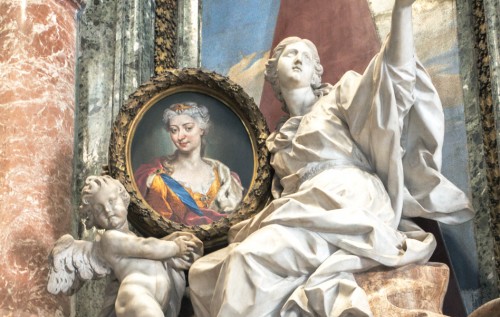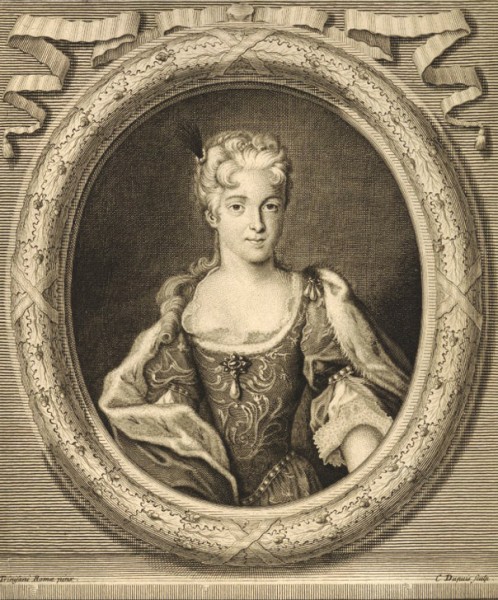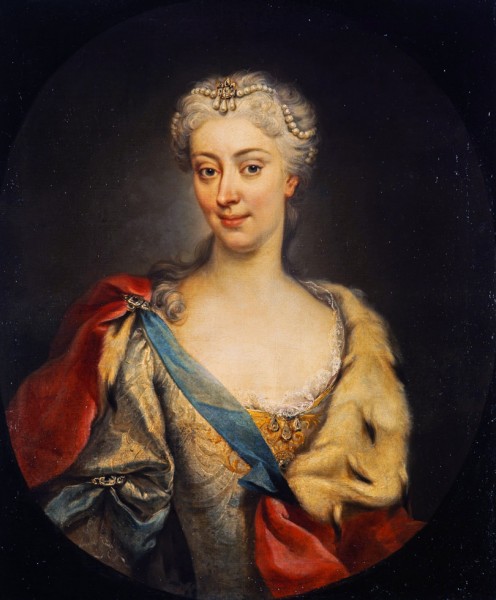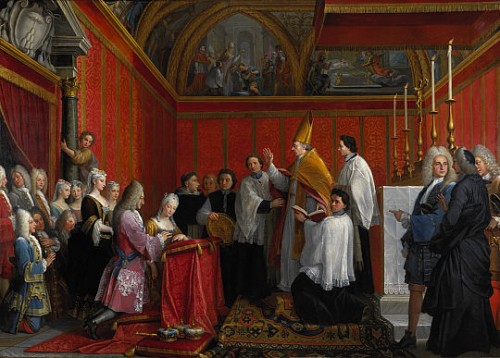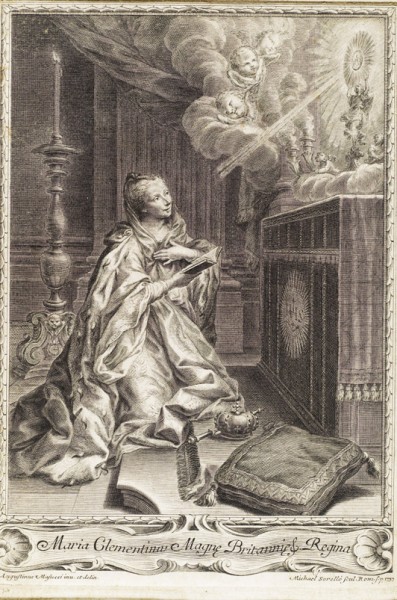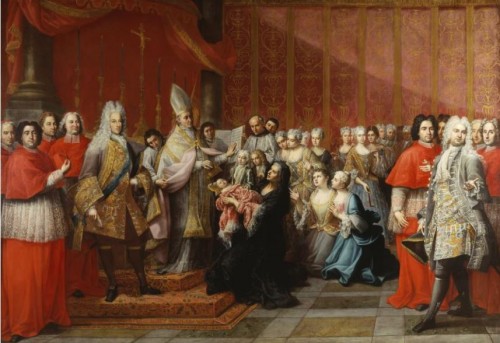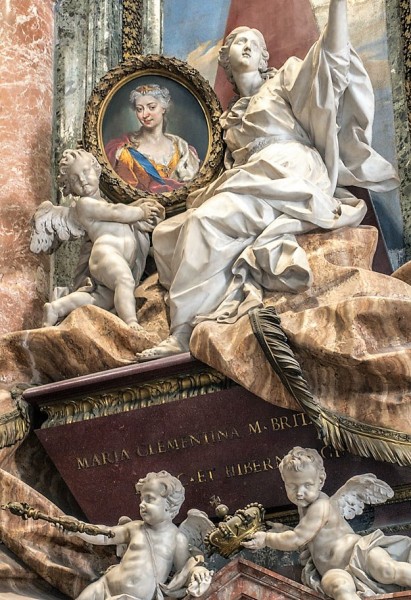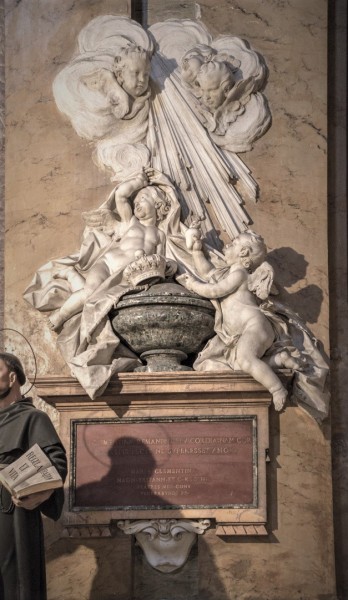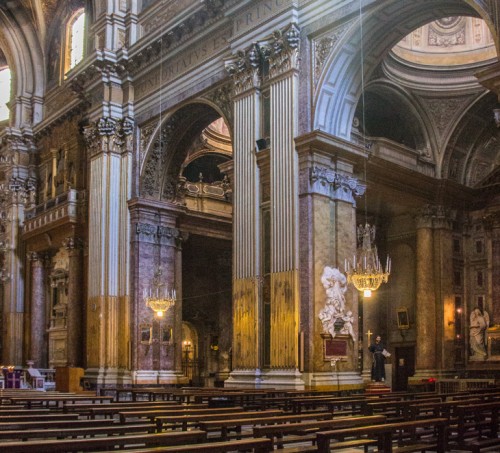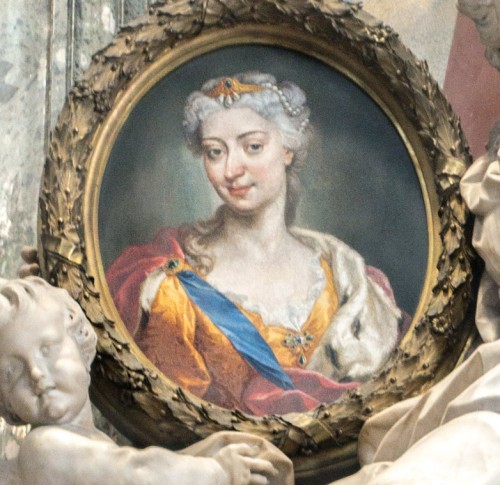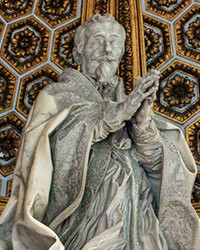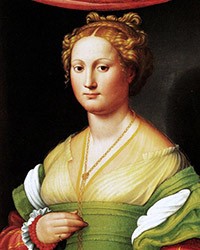And it all started so splendidly. Maria Clementina was the daughter of Duke Jakub Sobieski and the granddaughter of the Polish king, John III Sobieski – the famous hero of the Battle of Vienna, who saved Europe from a Turkish invasion. Thanks to her grace, as well as fortune, she was perceived as one of the best candidates for a bride in the then Europe. Therefore, it should come as no surprise that, when the slender, friendly, full of life, blond-haired girl was visited by the twenty-year-old, attractive and bold lieutenant Charles Wogan – an emissary of the titular King of England and Scotland James Francis Edward Stuart (the son of the dethroned James II) – asking if she would like to marry his master, the sixteen-year-old Maria replied with a yes. For her father such a marriage was an act of ennoblement and recognition – after all, the future son-in-law could have possibly become the king of England, especially since his title to the throne was respected not only by the pope, but also by the kings of France and Spain. For an emigrant such as James Stuart, such a marriage presented the possibility to wed a partner from an outstanding family, but was also a way to repair his own rather modest treasury.
However, before the future husband and wife could meet a lot of time had passed. Their road to happiness was blocked by the ruler of the Kingdom of Great Britain and Ireland, George I from the House of Hanover. He, based on the Act of Settlement from 1701 was elected by the parliament as the legal ruler of the united kingdom. Thus, the Stuart family was no longer able to inherit the throne, while the official religion of the kingdom was agreed to be Anglicanism, and it was also forbidden to inherit the throne by Roman Catholics, in this way disqualifying the Stuarts.
When Maria Clementina went to her castle in Oława in September of 1718 to meet her future husband, an event which was universally commented on in Europe occurred. Worried about the return of the pretender to the throne and wary of the fact that another one may be born soon, George I of Hannover took desperate measures, kidnapping his rival’s fiancée. He was aided by Emperor Charles VI. Maria Clementina was locked away in a castle near Innsbruck, however she was soon set free, once again being helped by the resolute lieutenant Wogan. In letters which she had written at the time, as well as reports of eyewitnesses, the princess exhibited a hearty spirit, self-confidence and resilience to all kinds of discomforts.
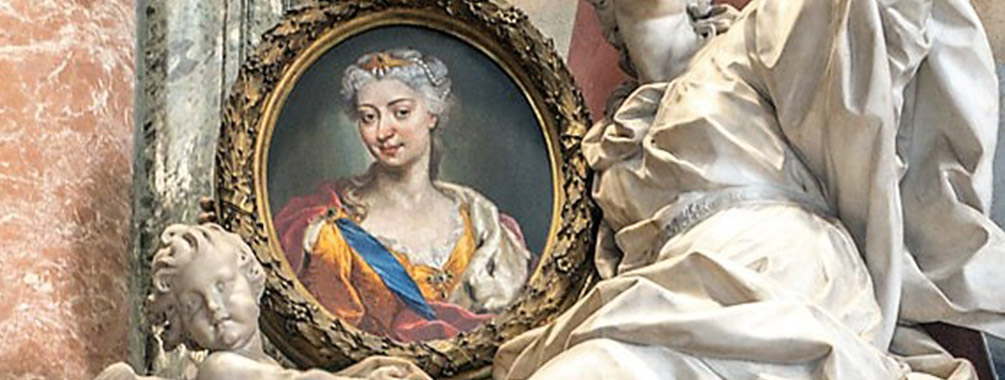
In May 1719 the wedding finally took place, although per procura – as James Edward’s emissary, James Murray stood in for him. And where was the groom? Occupied with the idea of his return to the throne, he was out searching for allies and the opportunities to restore the House of Stuart to the British throne. Although without any real power, he was a representative of an old dynasty and one that still enjoyed support of Scotland, but was dependent on other monarchs as well as the pope. Initially James Edward lived in France, then in Urbino, next in Rome, when the material well-being of his court was dependent upon the then pope, Clement XI. And it was here that Maria Clementina spent subsequent months awaiting her wedding, which was to take place, but nobody knew when and where. However, she was not bored. Clement XI, who was her godfather hosted her in a truly royal way. Although, she stayed in the convent of the Ursulines, she was provided with lavishly furnished apartments. She had numerous guests, was invited to parties and universally admired. The pope supplied her with the most outstanding meals and minted a medal in her honor depicting her as a goddess, while the Roman Senate praised her virtues with sounds of trumpets in the background. And thus the summer passed, during which Maria Clementina had to feel like a true queen. It was not until September when she received the news from her future, fourteen-years-her-senior husband, whom she had not yet seen, that the wedding would take place near Rome, in the town of Montefiascone, on the Bolsena Lake. And so it came to pass. They saw each other a mere few hours before the wedding and most likely the future husband did not impress the princess greatly. As it turned out he was rather closed-off, melancholic, and distrustful. However, subsequent months which were spent on their honeymoon, and grand banquets organized in their honor, as well as balls and visits, and on top of that the universal friendliness showed to them everywhere they went, allowed them to set aside the differences of their strong characters. Pope Clement XI, ensured them with a monthly salary, seeing them as the legal rulers of England and gave them the Roman palace (Palazzo Muti) next to the Basilica of Sant XII Apostoli as well as a summer residence in Albano. Their life was spent on planning how to regain the lost throne, among James’s few trusted advisors.
Despite financial troubles (the dowry of the daughter of duke Sobieski had not been paid), James’s court was a center of culture and especially music. The palace was alive with weekly concerts, while the royal couple also became famous for organizing operas. A year after the wedding their first son was born, Charles Edward (1720).
It quickly turned out, that the teenage Maria Clementina, who had previously been a lively young woman, in marriage withered. The first signs of being unable to get over their differences appeared after the birth of the second son, Henry Benedict (1725). At the same time both Maria and James turned out to be people who were unable to compromise, constantly blaming each other and making their home an arena of accusations, which fed the Roman rumor mill. Maria Clementina complained, that she is being kept apart from her sons and condemned to keep the company of her husband’s courtiers who were unfavorably disposed towards her, while also pointing out that James III forbids her from entering his chambers, humiliates her and fails to understand her, in addition wanting to raise their elder son in the Anglican faith. The last accusation was definitely false, as James was a declared Catholic. He discarded all suggestions of converting to Anglicanism, which probably would have facilitated his attempts to regain the throne. However, at his court he accepted the faith of most of his nation and did not favor anyone based on their religious preferences. The pope even approved of two Anglican clergymen being present there, but their task was to prepare the heir to the throne (Charles) to cope with the religious habits of his future kingdom. As a form of protest Maria Clementina decided to shut herself in a Benedictine monastery near the Church of Santa Cecilia on the Trastevere, thus causing a political and moral scandal. She was not shy of using the quill, writing numerous letters (to the pope, her cousin – the queen of Spain, the king of France), looking for allies anywhere she could. On the other hand, James felt unloved and officially humiliated, as the head of the family and pretender to the throne. His political position weakened, while within the ranks of his sympathizers (Jacobites) problems appeared.
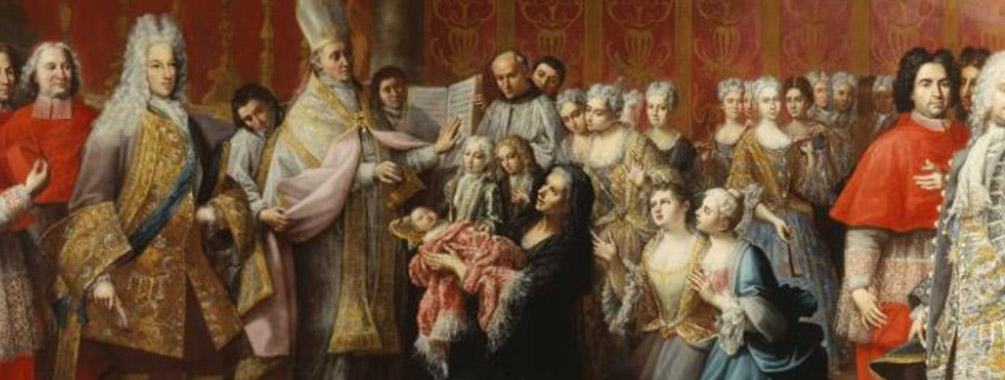
Thanks to papal mediation, the husband promised improvement, while Maria Clementina to return – after two years - to the palace. The problem seemed to have been resolved, but appearances can be deceiving. Maria Clementina had severe depression. For days on she prayed and refused to take any food. She avoided her husband constantly accusing him of every evil imaginable. Nobody was able to help this deeply unhappy woman. In this case James decided to abandon the city filled with gossip and moved, along with his sons, to Albano, in this way making official the separation from his wife. Maria Clementina stayed in Rome, only visiting her children from time to time. She prayed and fasted, while advancing anorexia (?) exhausted her organism. In addition scurvy appeared. Muscle pain, depression, anemia, photophobia and bleeding of the gums worsened her condition to such a degree that she was no longer able to leave her bed. However, she did not allow herself to be helped, being in apathy all the way until her death.
Seven years after her funeral, her coffin which was kept in the Vatican catacombs was taken out and placed in a decorative sarcophagus, which was completed at the cost of popes Clement XII and Benedict XIV and placed in St. Peter’s Basilica.
She is also commemorated in the city by a modest epiphany of her heart, which can be found in the second pillar on the right side of the Basilica of Santi XII Apostoli. It was completed by Filippo della Valle and consists of a marble tablet, above which there is an urn with two putti made of stucco. One of these is holding a heart, the other a crown. This church was not only a parish church of the unfortunate queen, but inside – after her death – her embalmed body was laid to rest and displayed to the public. The funeral celebrations which lasted several days also took place here.
Opinions on Maria Clementina are divided. In Anglo-Saxon literature she is generally shown as a neurotic, capricious, immature, and influential woman. In Roman Catholic literature her deep faith is often the leading motif. Most likely she was also emphatic and well-liked, as opposed to her bitteer and closed-off husband, and probably that is the explanation for the esteem which she was viewed with by subsequent popes, who decisively took her side in the marital civil war on the Tiber.

